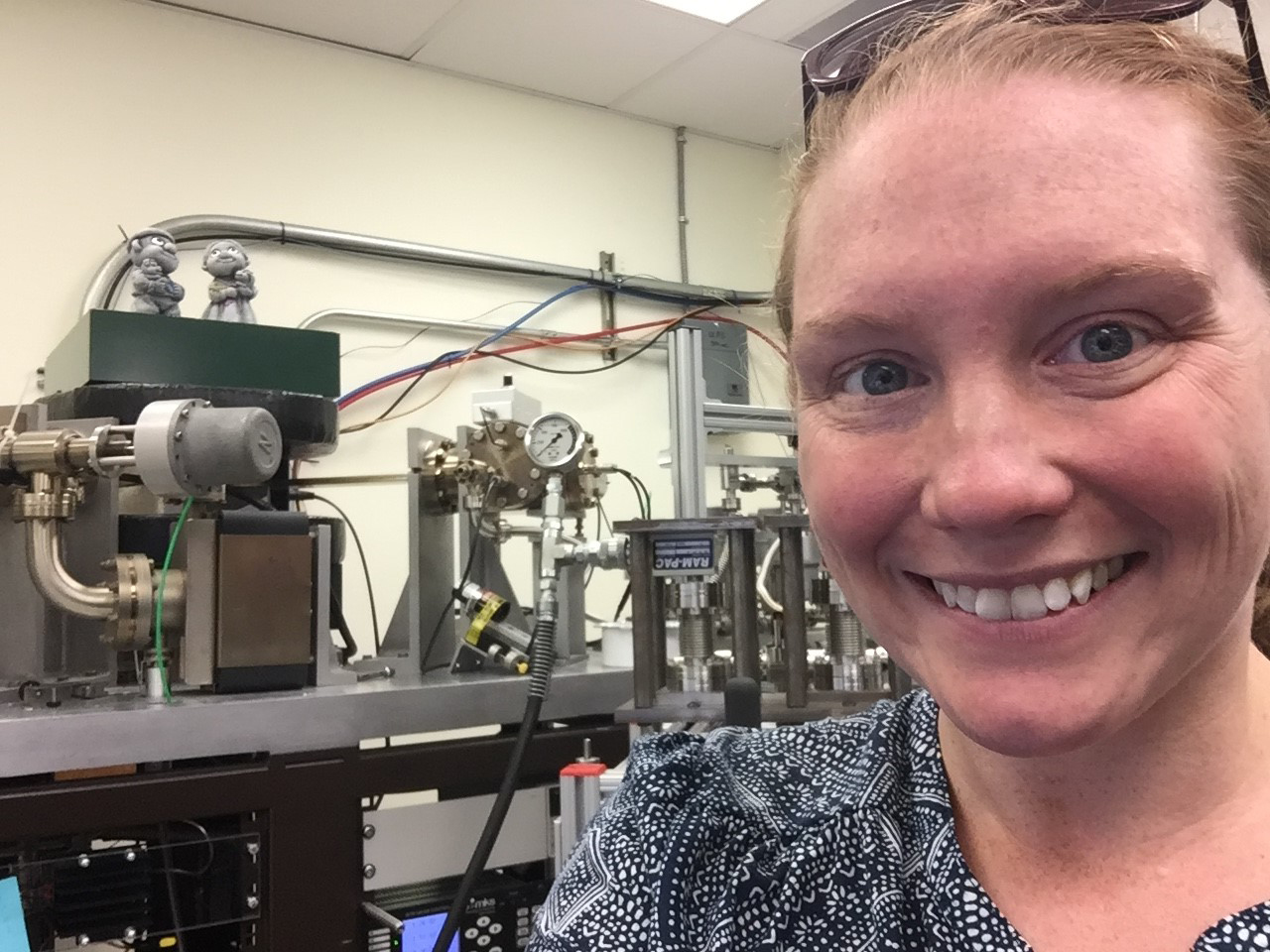Tremblay awarded the GSA Doris M. Curtis Outstanding Woman in Science Award
07-01-2020
Writer(s): Cheryl Pierce

The Geological Society of America (GSA) has announced that Marissa Tremblay, assistant professor of the Department of Earth, Atmospheric, and Planetary Sciences (EAPS), is the recipient of the Doris M. Curtis Outstanding Woman in Science Award. This award is presented to an outstanding woman that has impacted the field of the geosciences in a major way based on her Ph.D. research.
“I am deeply honored to have been nominated for this award and chosen as its recipient,” says Tremblay. “At my very first GSA meeting back in 2009, when I was a second-year undergraduate, I saw Jaime Barnes from UT Austin receive this award (back then, it was called the Subaru Outstanding Woman in Science Award). I remember being in awe of her accomplishments and never dreamed that I would be in the same position. It feels really wonderful to be recognized for my work and supported by members of my scientific community.”
Doris M. Curtis was the GSA’s first female president and the 103rd president of the organization. Curtis was committed to the causes of women, public awareness, minorities, and education. The award in her name is being awarded to Tremblay because her work has “opened entirely new avenues of inquiry in Earth and planetary science,” according to the GSA. Tremblay’s thesis work developed a fundamentally new form of geochemical paleothermometry which she calls Cosmogenic Noble Gas Paleothermometry.
The word "cosmogenic " refers to new atoms that are produced when high-energy cosmic rays from outer space hit existing atoms in rocks. These interactions only happen at the very surface of planets like Earth. Purdue University has a rich history of studying cosmogenic nuclides at the PRIME lab.
“Measuring these cosmogenic atoms is handy way of studying processes happening at the surface,” says Tremblay. “I work with cosmogenic helium and neon, which are noble gases that can leak out of rocks and minerals. The amount that leaks out and is lost depends on the temperatures that rocks experience while exposed to cosmic rays. In the past, scientists had avoided measuring cosmogenic helium and neon where there was evidence for this kind of loss. For my Ph.D., I took advantage of this leaky behavior to study the temperature conditions rocks experienced while they were exposed to cosmic rays. We can use this information to study past surface environmental conditions, both on Earth and other rocky bodies like the Moon and Mars.”
Tremblay was nominated for the GSA Doris M. Curtis Outstanding Woman in Science Award by her Ph.D. advisor, Professor David Shuster of the University of California, Berkeley, and coordinated by Darryl Granger, EAPS professor. Multiple letters of support were also submitted from colleagues in the geological field.
“Marissa has invented and begun applying a new form of paleothermometry to address questions on past climate variations in mountainous regions across the globe,” says Shuster. Her “work has involved designing and conducting basic experiments that quantify the temperature sensitivity of retention of cosmogenic 3He and 21Ne in quartz and feldspar. This is exciting research that is provided a new way to address problems that involve past temperature changes at Earth’s surface. In addition to that work, Marissa conducted two field seasons on another project with me related to tectonic uplift and topographic evolution in Tibet as a separate part of her Ph.D. thesis. Her work has led to an exciting result that demonstrates a large decrease in km-scale exhumation rates in southern Tibet at ~10 Ma, which she relates to the establishment of high Himalayan elevations which caused both rain shadow and drainage reorganization in the Lhasa terrane. Published in 2015, her first paper from this work (Tremblay et al., 2015 PNAS) has already been cited 36 times, and is considered by many to be among the very best pieces of research to come out of the numerous studies of the Himalayan/Tibetan mountain range in many years.”
The GSA Doris M. Curtis Outstanding Woman in Science Award will be presented to Tremblay this fall. To learn more about Tremblay in her own words, she can be seen featured on an episode of the podcast Superheroes of Science.